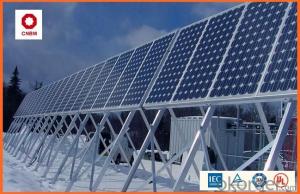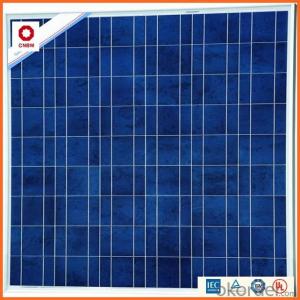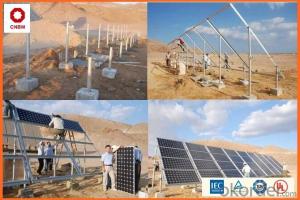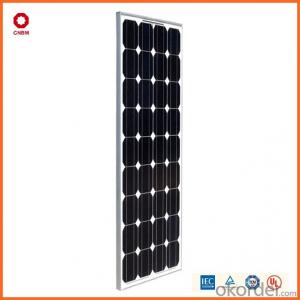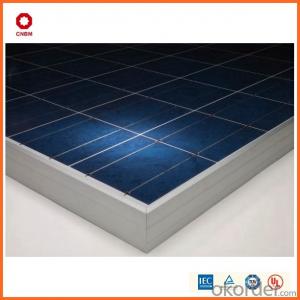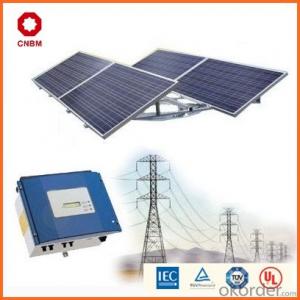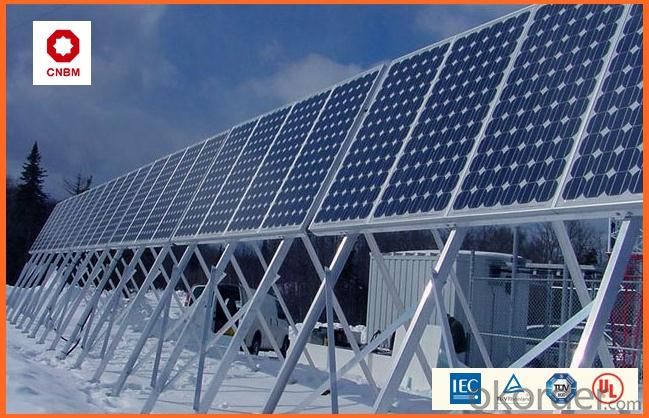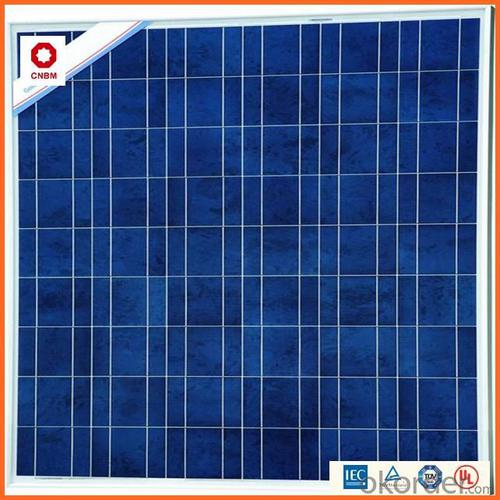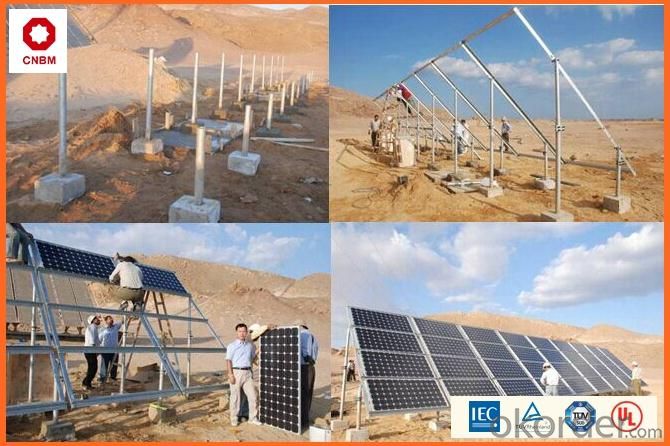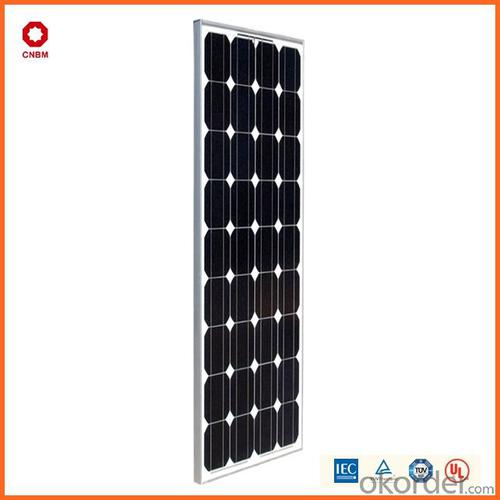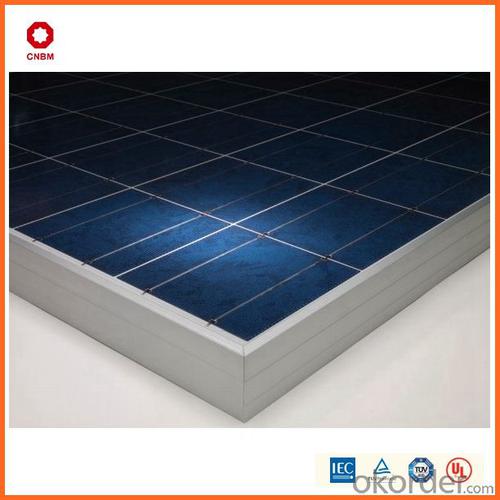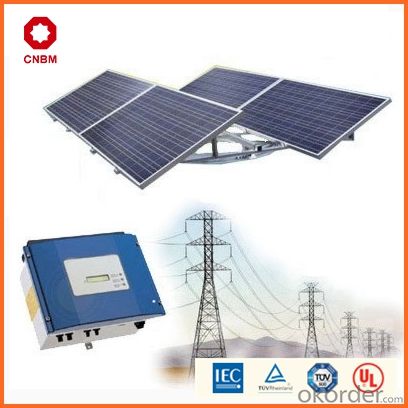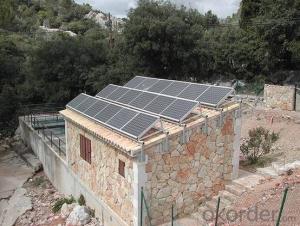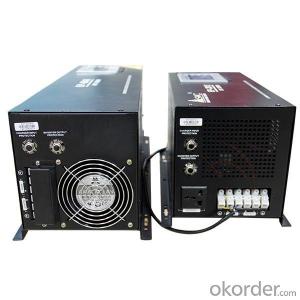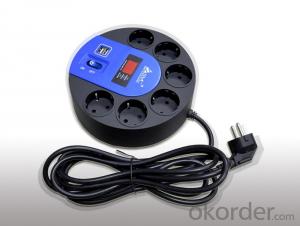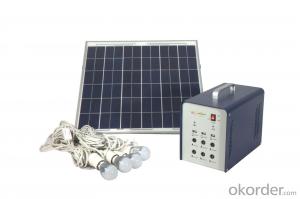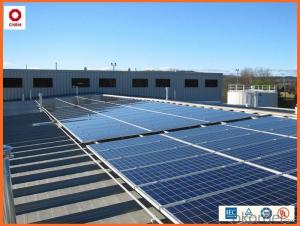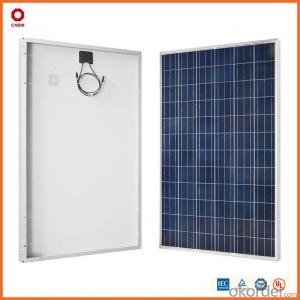Sirius Solar Energy Systems 105w Small Solar Panels in Stock China Manufacturer
- Loading Port:
- China main port
- Payment Terms:
- TT OR LC
- Min Order Qty:
- 1 watt
- Supply Capability:
- 10000000 watt/month
OKorder Service Pledge
OKorder Financial Service
You Might Also Like
Specification
Product Description:
Hot Sale !!! Quality and Safety of Small Poly Solar Panel 5w~150w
1. Rigorous quality control meets the highest international standards.
2. High-transmissivity low-iron tempered glass, strong aluminium frame.
3. Using UV-resistant silicon.
4. IS09001/14001/CE/TUV/UL
Warranties of Small Poly Solar Panel 35~85w
1. 10 years limited product warranty
2. 15 years at 90% of the minimal rated power output
3. 25 years at 80% of the minimal rated power output
Specification
Characteristics of Poly solar panels CNBM (245-320W) | |||||
Max Power Voltage Vmp(V) | 30.3 | 30.8 | 31.1 | 31.4 | 31.85 |
Max Power Current Imp(A) | 7.60 | 7.64 | 7.73 | 7.81 | 7.85 |
Open Circuit Voltage Voc(V) | 36.1 | 36.6 | 37 | 37.3 | 37.68 |
Short Circuit Current Isc(A) | 8.50 | 8.55 | 8.65 | 8.75 | 8.85 |
Max Power Pm(W) | 230W | 235W | 240W | 245W | 250W |
Temperature Coefficient of Cells Poly solar panels CNBM (245-320W) | |
NOCT | 45± 2 |
Temperature Coeffucients of Isc | 0.0492 |
Temperature Coeffucients of Voc | -0.3374 |
Temperature Coeffucients of Voc | -0.4677 |
Mechanical Data of Poly solar panels CNBM (245-320W) | |
Dimension | 1638 × 982 × 40 mm |
Weight | 19.5 kg |
No. of Cells and Connections | 60 (6 ×10) |
Tolerance | 0 ~ + 5 W |
Cell | Monocrystalline Cell 156 × 156 mm |
Packing | 624 Pcs/40ft(H) Container |
Limits of Poly solar panels CNBM (245-320W) | |
Operating Temperature | -40 to +85 |
Storage Temperature | -40 to +85 |
Max System Voltage | 1000VDC(IEC) / 600VDC(UL) |
Features of our products:
• High conversion efficiency mono/poly-crystalline amorphous silicon solar cells
• Modules incorporate high performance bypass diodes to minimize the power drop caused by shading
• High transmittance, low-iron tempered glass
• High performance EVA encapsulant to prevent destroying and water.
• AI frame: without screw, corner connection. 8 holes on the frame can be installed easily
• Good performance of preventing from atrocious weather such as wind and hails
• Certifications: CE IEC TUV VDE UL, Class I
• 10 years 90% power output warranty
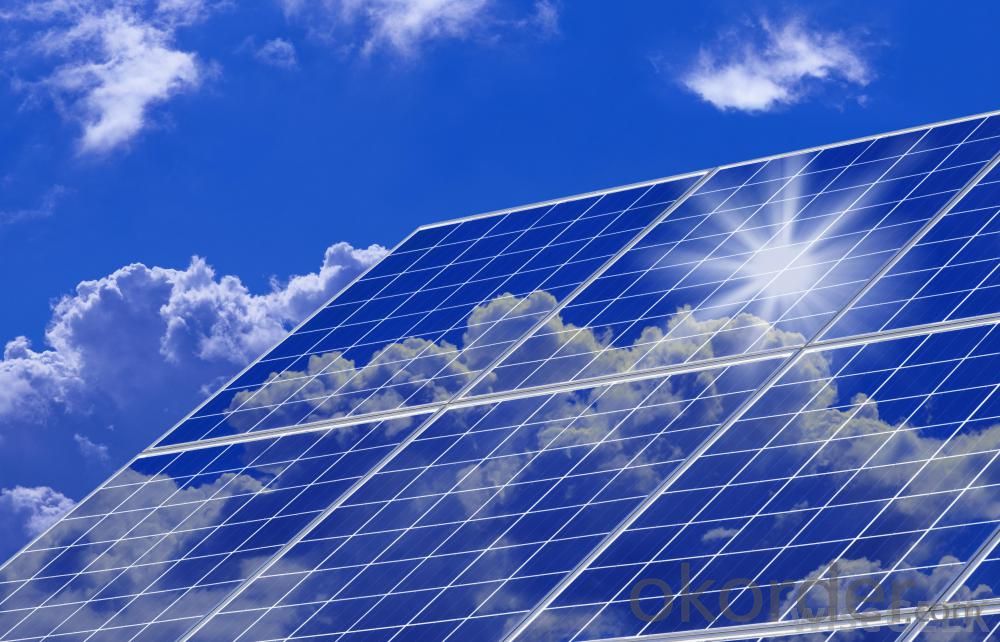
Shipping of Small Poly Solar Panel 35~85w
By Sea | Delivery from Shanghai or Ningbo seaport |
By Air | Departure from Shanghai Pudong Airport |
By Express | Post by DHL, EMS, UPS, TNT. |
Features of our products:
• High conversion efficiency mono/poly-crystalline amorphous silicon solar cells
• Modules incorporate high performance bypass diodes to minimize the power drop caused by shading
• High transmittance, low-iron tempered glass
• High performance EVA encapsulant to prevent destroying and water.
• AI frame: without screw, corner connection. 8 holes on the frame can be installed easily
• Good performance of preventing from atrocious weather such as wind and hails
• Certifications: CE IEC TUV VDE UL, Class I
• 10 years 90% power output warranty
As a professional Solar Panel manufacturer and Supplier in China, we have our customers come around the whole world and our specialization has got a worldwide recognition. Meanwhile, with our superior quality, competitive price, prompt and excellent service, As main role in trade section of CNBM Group, CNBM International Corporation supplies products including Monocrystalline Solar Panel, Polycrystalline Solar Panel ( multicrystalline silicon Solar Panel) have received and enjoyed famous reputation in many countries and regions in the world.
- Q: Can solar energy systems be used in residential areas with homeowners associations?
- Yes, solar energy systems can be used in residential areas with homeowners associations. However, it is important to review and comply with the HOA's guidelines and regulations regarding the installation of solar panels. Some associations may have specific requirements or restrictions, such as design guidelines, placement restrictions, or approval processes. It is recommended to consult with the homeowners association and work together to find a solution that meets both the homeowner's desire for solar energy and the association's guidelines.
- Q: Can solar energy systems be used in powering telecommunications towers?
- Solar energy systems have the capability to be utilized in order to supply power to telecommunications towers. Solar energy, which is a renewable power source, utilizes the sun's energy to create electricity. In order for telecommunications towers to function properly, they require a steady and reliable source of electricity, and solar energy can provide a sustainable solution for this requirement. To capture sunlight and convert it into electricity, solar panels can be installed either on the tower itself or in its immediate vicinity. This electricity can then be stored in batteries to be used during periods of limited sunlight or at night. In locations that are distant or not connected to an electrical grid, where gaining access to electricity is difficult or costly, the use of solar energy systems can be especially advantageous for powering telecommunications towers. Furthermore, solar power lessens reliance on fossil fuels, diminishes carbon emissions, and ultimately reduces operating expenses. All in all, solar energy systems present a feasible and environmentally-friendly choice for powering telecommunications towers.
- Q: How do solar energy systems impact the resale value of a commercial building?
- Solar energy systems can have a positive impact on the resale value of a commercial building. Studies have shown that properties equipped with solar panels tend to sell for higher prices and attract more potential buyers. This is primarily due to the reduced energy costs associated with solar power, which can save businesses a significant amount of money in the long term. Additionally, solar energy systems also enhance the sustainability and environmental profile of a building, making it more attractive to environmentally conscious investors.
- Q: What is the impact of tree shade on the performance of solar panels?
- The performance of solar panels can be greatly affected by the presence of tree shade. When trees cast shadows on solar panels, their ability to convert sunlight into electricity is significantly diminished. This occurs because the shade prevents direct sunlight from reaching the panels, resulting in a decrease in overall efficiency. Shade on solar panels gives rise to a phenomenon called "partial shading," where only a portion of the panel is shaded. In such cases, the shaded section acts as an obstacle, limiting the unshaded portion from producing electricity at its full potential. Consequently, the solar panel system experiences a decline in energy production. Furthermore, tree shade can cause an imbalance in the output of solar panels that are connected in series. When one panel is shaded, it becomes a bottleneck for the flow of electricity, leading to a significant decrease in the performance of the entire series. As a result, the overall energy generation of the solar system is compromised. It is important to note that the impact of tree shade on solar panels varies depending on various factors, such as the intensity and duration of the shade, the orientation and tilt angle of the panels, and the efficiency of the panels themselves. Additionally, advancements in solar panel technology, such as the use of bypass diodes in modern systems, can help alleviate the negative effects of shading to a certain extent. To optimize the performance of solar panels in the presence of tree shade, careful consideration must be given to the placement and design of the solar panel system. This may involve actions like trimming or removing trees that cast shade on the panels, adjusting the tilt angle of the panels to minimize shading, or exploring alternative installation locations where shade is less of a concern. In conclusion, tree shade can significantly impact the performance of solar panels by reducing their efficiency and energy production. Therefore, it is crucial to thoroughly evaluate the effects of shade when planning and designing a solar panel installation to maximize its effectiveness.
- Q: What are the advantages of solar energy systems?
- Solar energy systems offer several benefits. To begin with, solar energy is an endless source of power, relying on the sun's continuous existence. This stands in stark contrast to finite fossil fuels, which are depleting rapidly. Furthermore, solar energy is environmentally conscious. Unlike fossil fuels, solar energy systems do not release harmful greenhouse gases or pollutants that contribute to climate change and air pollution. This makes solar energy a clean and sustainable alternative that aids in reducing our carbon footprint and countering the adverse effects of global warming. Moreover, solar energy systems can significantly decrease electricity expenses. Once the initial investment in solar panels is made, the cost of harnessing solar energy remains relatively low. Solar energy is essentially free, with the only expenses being equipment maintenance and occasional repairs. This can result in substantial long-term savings on energy bills, especially considering the continuous rise in traditional electricity costs. Additionally, solar energy systems promote energy independence. By generating your own electricity, you become less reliant on utility companies and the fluctuating prices of fossil fuels. This independence enhances energy security, as solar energy systems are not susceptible to supply disruptions or price fluctuations caused by geopolitical tensions or natural disasters. Lastly, the installation of solar energy systems stimulates local economies and job creation. The solar industry has experienced significant growth, leading to the creation of numerous jobs in manufacturing, installation, and maintenance. This not only boosts the economy but also provides employment opportunities in a rapidly expanding sector. In conclusion, the benefits of solar energy systems are manifold. From being a renewable and environmentally friendly power source to reducing electricity expenses, providing energy independence, and generating jobs, solar energy proves to be a viable and sustainable solution for our energy needs.
- Q: How do solar energy systems impact the energy poverty gap?
- The energy poverty gap can be significantly reduced through the implementation of solar energy systems, which offer clean and affordable electricity to those without access to reliable energy sources. Energy poverty affects millions worldwide, referring to the absence of electricity and modern energy services. Solar energy systems possess a key advantage in their ability to generate electricity in a decentralized manner. This makes them ideal for off-grid and rural areas that face challenges and high costs in connecting to the traditional power grid. These systems are easily installed and can be customized based on the specific energy needs of a community or household. By utilizing solar power, these systems provide a sustainable and dependable source of electricity, lessening the reliance on expensive and environmentally harmful fossil fuels. Consequently, individuals and communities are relieved of financial burdens, as solar energy becomes free after installation. Moreover, solar energy systems have the potential to drive economic development in energy-poor regions. Access to electricity enables the establishment of small businesses such as mobile phone charging stations, refrigeration units for perishable goods, and even micro-grids to power communal services like schools and healthcare facilities. These economic activities create job opportunities and enhance overall quality of life. In addition to economic benefits, solar energy systems contribute to environmental sustainability. By generating electricity from renewable sources, they reduce greenhouse gas emissions and combat climate change. This is particularly significant for energy-poor communities reliant on kerosene lamps or diesel generators, which emit harmful pollutants and contribute to air pollution. In conclusion, solar energy systems play a crucial role in bridging the energy poverty gap by offering clean, affordable, and sustainable electricity to those lacking access to modern energy services. They provide a decentralized and scalable solution that fosters economic development, improves quality of life, and promotes environmental sustainability.
- Q: What is the impact of roof material on the performance of solar panels?
- The impact of roof material on the performance of solar panels can vary. Certain roof materials, like metal or concrete, can enhance the performance of solar panels by reflecting sunlight onto the panels, thereby increasing their efficiency. On the other hand, materials like clay tiles or slate can create shading or uneven surfaces, which can reduce the overall output of solar panels. Additionally, roof materials with high heat absorption, such as asphalt shingles, may cause the panels to overheat, leading to decreased efficiency. Therefore, the choice of roof material plays a crucial role in determining the effectiveness of solar panels.
- Q: Can solar energy systems be used for powering electric vehicle component manufacturing plants?
- Yes, solar energy systems can definitely be used for powering electric vehicle component manufacturing plants. Solar energy is a renewable and sustainable source of power that can provide a significant amount of electricity needed for various industrial processes. By installing solar panels on the rooftops or open spaces around the manufacturing plant, the facility can generate clean and emission-free electricity, reducing its reliance on traditional energy sources. Solar energy systems have the capacity to generate a substantial amount of electricity, especially when combined with advanced technologies such as concentrated solar power or solar tracking systems. These systems can efficiently harness sunlight and convert it into electricity, providing a reliable and consistent source of power for the manufacturing plant. Additionally, electric vehicle component manufacturing plants often require a significant amount of energy for various processes, such as machining, welding, and assembly. By utilizing solar energy, these plants can not only meet their electricity needs but also reduce their operational costs and carbon footprint. Solar power can help in achieving sustainability goals and contribute to a cleaner and greener manufacturing process. Moreover, the use of solar energy systems in electric vehicle component manufacturing plants can serve as a positive marketing tool. As the demand for electric vehicles and sustainable manufacturing practices continues to rise, consumers are increasingly drawn towards companies that actively promote renewable energy. By powering their manufacturing plants with solar energy, companies can showcase their commitment to environmental stewardship and attract environmentally conscious customers. In conclusion, solar energy systems can indeed be utilized to power electric vehicle component manufacturing plants. With their ability to generate clean, reliable, and cost-effective electricity, solar power can play a crucial role in meeting the energy needs of these plants while promoting sustainability and reducing environmental impact.
- Q: How do solar energy systems affect the grid?
- Solar energy systems can have both positive and negative effects on the grid. On the positive side, when solar panels generate excess electricity, it can be fed back into the grid, reducing the demand for energy from traditional power plants. This can help in reducing the overall carbon footprint and reliance on fossil fuels. However, the intermittency of solar power can pose challenges. When solar production drops due to weather conditions or at night, the grid must compensate by relying on other energy sources, which can strain the system and require additional infrastructure investments. Nevertheless, with proper planning, grid integration, and energy storage solutions, solar energy systems can contribute to a more sustainable and resilient grid.
- Q: What is a solar thermal system?
- A solar thermal system is a technology that uses sunlight to heat water or other fluids for various applications such as heating buildings, providing hot water, or generating electricity. It involves capturing solar energy using collectors, typically mounted on rooftops, and transferring it to a storage tank or heat exchanger where it can be used or converted into usable energy.
Send your message to us
Sirius Solar Energy Systems 105w Small Solar Panels in Stock China Manufacturer
- Loading Port:
- China main port
- Payment Terms:
- TT OR LC
- Min Order Qty:
- 1 watt
- Supply Capability:
- 10000000 watt/month
OKorder Service Pledge
OKorder Financial Service
Similar products
Hot products
Hot Searches
Related keywords
